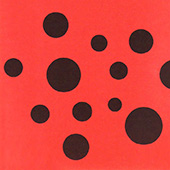The Theory of evolution is widely known to be a means of explaining our origins and how we came to be. It is also often viewed as a hypothetical mechanism that becomes visible in retrospect over millions of years. While this is partly true, in recent years, it has become possible for scientists to observe and record evolution live, in the wild, as demonstrated by Peter and Rosemary Grant in their 40 year Finch Study (Grant & Grant, 2014). The field of Evolutionary Biology is continuously updating itself, and with it, our collective understanding of evolution.
In his book, ‘The Beak of the Finch, ’ Jonathan Weiner writes, “And our power to drive Darwin’s process, like the power of the process itself, is not hypothetical. The industrial revolution was changing environments and, with them, the course of evolution even before Darwin published the Origin.” (Weiner, 1994) He describes the human species as an ecological dominant, driving and accelerating evolution, both in the wild and within our backyards.
While we are influencing the evolution of species on this planet in multiple ways, i.e., through domestication, which leads to the hybridization of species and through the effect of human-made activities on the climate, evolution also has direct and immediate implications for our Agricultural and Medical sectors. Both the fields of Agriculture and Medicine battle organisms that are continually evolving and resisting us, i.e., Insects and viruses, respectively. As pesticide companies build more robust and stronger insecticides, they fail to understand the evolutionary mechanisms that allow insects to adapt and evolve against the selection pressure applied by these pesticides. The same cycle can be identified in the production of antibiotics at big Pharma companies. Ecologists Robert May and Andrew Dobson say that this “may help to show that evolution is not some scholarly abstraction, but rather is a reality that has undermined, and will continue to undermine, any control program that fails to take account of evolutionary processes.” (May & Dobson, 1986).
In his article ‘Public Understanding of Science’ published on the APA website, Dr. Steven J. Breckler writes, “With scientific literacy comes better decision-making capabilities and easier navigation through life’s everyday challenges...Public understanding of science is also essential for the health of the scientific enterprise itself.”
In this project, I aim to use Information Visualization and Data Visualization to communicate ideas from Evolutionary biology, as expressed in two well-known books about the 40-year-long Finch Study. The following sections explain the Study that this project is based on and then talk about the reference books, audience, intent of the visualization, key questions it should answer, and the datasets used. The next part will explain the design methods and devices used, the medium, narrative structure, and visualization design I have explored. The report will end with my reflections on the process and plan for the next stage.
Case Study Download:
• Visualizing Biological Evolution......


